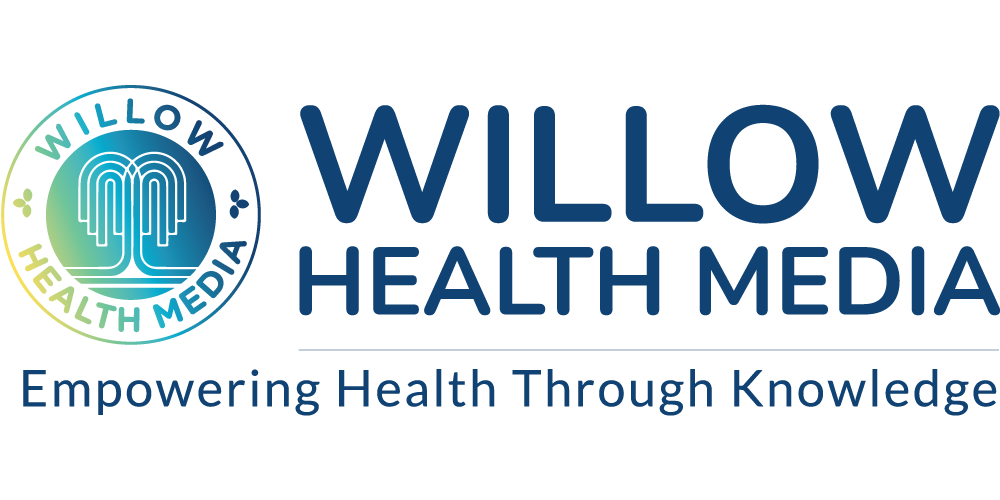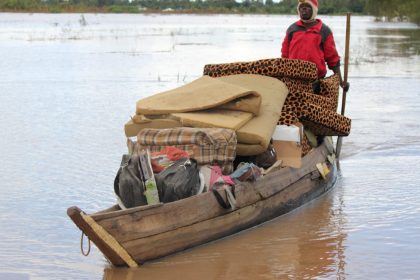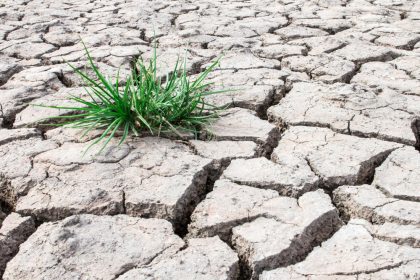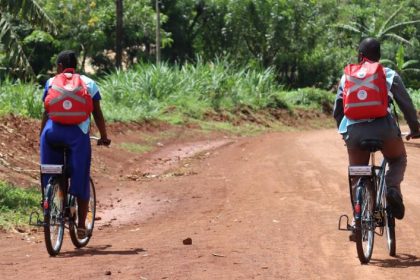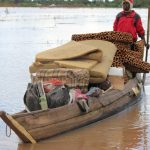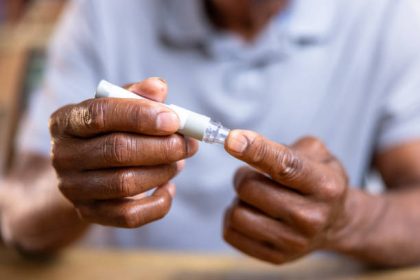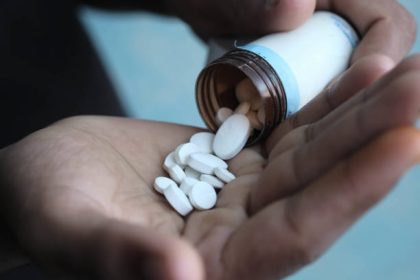Every rainy season, floods cut off roads to clinics for women in labour while clogged drainage systems spread waterborne diseases. In Nairobi, some worry about traffic, others about cholera and mobile clinics don’t move faster than disasters.
Amina from Wape Wape village in Nairobi’s Mukuru Kwa Njenga informal settlement vividly remembers the night when her labour started, and the road to the clinic was flooded after a heavy downpour.
“The water was up to my knees. My neighbour helped me deliver at home with only a candle for light,” recalls the 26-year-old.
The story is the same in Nairobi’s other informal settlements like Dandora, home to over 2.5 million people in a city where nearly half the residents occupy about five per cent of the land, according to the 2023 Nairobi Urban Health Report. For the informal settlements in Nairobi, climate change is not a distant scientific issue. It is a daily lived crisis.
During the April 2024 floods, over 281,000 people were displaced across Kenya, and at least 267 lives were lost, 188 were injured, and 75 were missing, according to the Kenya National Disaster Operations Centre.
Additionally, the floods submerged and destroyed at least 62 primary schools throughout Kenya. In Nairobi’s slums, Mukuru, Mathare, and Kibera, the flood cut off access to healthcare, besides the risk of waterborne diseases like cholera. Health centres became islands, unreachable as roads turned into rivers. Cold chains for vaccines broke down when power failed. Toilets overflowed, contaminating shallow wells. And in the chaos, women in labour were forced to deliver at home, often without skilled care.
Health divide in Nairobi is such that gleaming high-rises are on one side, sprawling slums on the other
According to the 2022 Kenya Demographic and Health Survey (KDHS), 11 per cent of births in Kenya occur at home, largely in low-income families and women in informal settlements are less likely to deliver in a health facility compared to their counterparts in wealthier areas. According to the Kenya Bureau of Statistics, the expected births in 2024 were 1,579,695. This means about 173,767 babies were born at home. Flooding and poor drainage make that gap even wider.
The health divide in Nairobi mirrors its physical one. Gleaming high-rises on one side, and sprawling settlements on the other. While one neighbourhood worries about traffic, another worries about cholera.
A 2023 UN-Habitat study revealed that 70 per cent of Nairobi’s informal settlements sit in flood-prone zones. Every rainy season, clogged drainage channels overflow, spreading disease.
In 2023, the Ministry of Health reported 12,120 cholera cases, with a case fatality rate of 1.7 per cent, with Nairobi among the worst-hit counties.
Floods also disrupt medicine supply chains. When key roads to rural warehouses are washed out, deliveries stall for weeks. In 2024, this left dozens of clinics without essential antibiotics or vaccines. Patients with chronic illnesses such as diabetes, hypertension, and HIV bore the brunt.
The World Health Organisation (WHO) estimates that climate change will cause an additional 250,000 deaths annually between 2030 and 2050, mainly from malnutrition, malaria, diarrhoea and heat stress. Sub-Saharan Africa, already home to some of the world’s most fragile health systems, is projected to suffer the most.
The 2024 floods saw clinic attendance in informal settlements drop by over 40%
“You can’t ask a young woman to attend a clinic when her house is flooded,” says Miriam, a community health educator under the PEPFAR-funded DREAMS Programme, which mentors adolescent girls and young women on HIV and reproductive health.
For Miriam and others in health outreach, climate change has become a daily conversation. “You can’t discuss family planning when she hasn’t eaten for two days or lost her home to the rain.”
These barriers are the human face of health inequity. When social, economic, and environmental factors intersect to deny communities their right to health.
Based on MOH reports, during the 2024 floods, clinic attendance in informal settlements dropped by over 40 per cent, according to Nairobi County Health Department data. Many clinics also reported medicine shortages and stockouts as supplies were delayed or damaged.
“Health doesn’t exist in a vacuum,” says Miriam. “It is shaped by gender, poverty, and the environment we live in. You can’t solve one without addressing the others.”
“Climate justice” goes beyond the science of emissions; it’s about fairness. It means recognising that those who contribute least to global warming often suffer the most from its effects. In Nairobi’s informal settlements, climate justice means empowering local communities to have a say in how their neighbourhoods are planned, drained, and protected. Through the just-ended DREAMS initiative, women’s groups now integrate climate adaptation into their health programmes.
They map flood-prone areas, identify safer routes to clinics, and advocate for resilient health facilities. “We realised that empowerment is not just about information, it’s about voice,” Miriam explains. “When women talk about how floods affect their health, local leaders start to listen.”
Over 200 community volunteers trained to monitor health service access during floods
In Mukuru, through Hope Worldwide Kenya, a local organisation focused on building resilient health systems for Nairobi’s slum dwellers, over 200 community volunteers have been trained to monitor health service access for girls and women, including disruptions during floods and also advocate for government response.
The programmes also support women’s economic empowerment programmes through building entrepreneurship skills, provision of business start-up kits and linking women to micro-grants for rebuilding their lives and supporting sanitation facilities destroyed by rainstorms. This is a small but powerful form of justice.
Kenya’s government has made promising strides in climate-health policy. The National Climate Change Action Plan (NCCAP 2023–2027) and the Ministry of Health’s Climate and Health Strategy (2023–2028) outline measures such as early-warning systems, data-driven planning, and climate-resilient infrastructure.
However, implementation remains uneven. Fewer than half of informal settlement residents live within walking distance of a health facility. Only seven per cent have access to reliable piped water. When disasters strike, these gaps widen, and communities are left to cope alone.
Public health experts concur climate change is not only an environmental crisis, but also a social one
The evidence is clear: we need three interventions since the climate crisis hits hardest where systems are the weakest. First, climate-resilient health centres with solar power and reinforced drainage. Second, stronger community health systems with trained volunteers and mobile clinics. Third, inclusive governance that brings women and local leaders into planning.
The World Bank estimates Kenya loses two to three per cent of its GDP annually to climate-related damages, much of it from health and infrastructure losses. Yet, every dollar spent on adaptation could yield fourfold returns through avoided damage and improved productivity.
For Miriam, equity is not just a professional principle; it’s personal.
“It is health equity when a mother can safely deliver during floods,” she says softly. “It is gender equity when women have a voice in disaster response. And it is climate justice when communities most at risk shape the policies meant to protect them.”
Public health practitioners now concur that climate change is not only an environmental crisis, but also a social one. Addressing it requires reimagining healthcare not as a system that reacts to emergencies, but one that anticipates them; not as a service delivered to people, but a partnership built with them.
Obwiri Kenyatta is a global health and development expert on health and gender equity, HIV, community health and climate justice.
